This is the fourth and final post of this series on Tigre (jaguar) masks from Guerrero. It focuses on the masks used for the la Danza del Tigre y los Tlaminques (the jaguar and the townspeople) and the related Danza de Tejón (badger) in the Amusgo region, which spans the border between the Mexican states of Guerrero and Oaxaca. This is a relatively remote area and one finds few Amusgo masks in published works about dance masks from Mexico. There are several major Amusgo towns—Guadalupe Victoria, Tlacoachistlahuaca, and Xochistlahuaca, in the state of Guerrero and San Pedro Amusgos, in the state of Oaxaca. I had shared a YouTube™ video of the dance of the Tigre from Xochistlahuaca in my post about Mexican masks with women’s faces, noting how the dancer wearing a Jaguar mask and suit is quick to menace all those within reach, particularly the other characters in the dance—Don Manuel, his wife Doña Catalina, and their Perro (dog), Cuyuchi. All three repeatedly provoke and attack the Tigre figure, leading him to pounce on them, knocking them to the ground. The bystanders watch these encounters with obvious amusement. Here is a link to the video, which has become one of my favorites.
https://www.youtube.com/watch?v=WFJ4HJjQ10E
The masks worn by the Amusgo Tigres seem to follow a standardized design. The two masks that follow, which were collected in Guadalupe Victoria in 1995, are quite similar to the one in the video from 2014. In another video, taken in San Pedro Amusgos in 2012, one sees the same Tigre mask again, but this one is made from paper mache.
https://www.youtube.com/watch?v=i-kLD__3sJ4
Here is a Tigre mask from one of the Amuzgo towns, Guadalupe Victoria.
It has mirror eyes, but no opening for vision at that level. The dancer looks out through the open mouth.
This mask is 11 inches in height, 8 inches in width, and 6 inches in depth.
This mask has a simple design, but it is visually effective.
The back of this mask demonstrates mild staining from use, and mainly around the chin.
Here is another Tigre mask that is almost identical to the first and obviously from the same community.
In this case there are round openings for the eyes and then mirrors have been attached from the back. Once again the dancer must look out through the open mouth.
Like the first mask, this Tigre is also 11 inches in height, 8 inches in width, and 6 inches in depth.
The mirrors used for the eyes were commercial products that had images on their backs. In this case, one had an image of Christ. There is considerable staining from use on the back of this mask, again most evident around the inside of the chin. This is a heavy mask, and I have provided a sturdy arrangement of wires to support it on the wall. In most cases I remove the hanging wires to photograph the masks, but I left this one in place because it was so elaborate.
Since these are dances about hunting the jaguar, there is usually a hunting dog, or Perro. Here is a Perro mask from Guadalupe Victoria.
This mask is 14 inches long, not including the tongue, 6 inches in width, and 3 inches in depth.
The perro mask shows signs of extensive wear on the back and also on the face.
As you may recall the full name of this dance is La Danza del Tigre y los Tlaminques (the jaguar and the townspeople). An explanation of this dance, in Spanish, accompanied the first YouTube video. There one learns something surprising:
“Tlaminques, who are citizens of a community from the colonial era, are represented by animal couples.” There are 30 couples, wearing masks of such animals as deer, iguana lizards, and rabbits. Therefore, in some local versions of the Tigre dance there are many masks of Tejones (badgers, or by extension—wild animals). Here are some Tejón masks, all from Guadalupe Victoria, Guerrero.
This mask is 11 inches in height, not including the tongue, 7 inches in width, and 4 inches in depth.
You may have noticed that both Tigres, the Perro, and this Tejón all have leather tongues.
This is a sight that is very familiar to all dog owners. But in this case the viewer is about to be licked by a badger.
The back of the grey Tejón mask demonstrated marked wear from use.
Here are three more Tejones from Guadalupe Victoria, shown as a group to demonstrate their range of sizes. The one in the middle must have been worn by a small child. These three masks lack leather tongues, but share these long slender muzzles.
Here is the largest mask from this trio.
This mask is 11 inches in height, 6 inches in width, and 6 inches in depth.
There is evidence of marked wear.
Here is the second Tejón from this trio.
This mask is 10 inches in height, 5 inches in width, and 2½ inches in depth.
There is writing on the back; it seems to say “1988.” Again one sees marked wear.
Here is the smallest of the three. It is extremely worn.
This mask is 9 inches in height, 4 inches in width, and 3½ inches in depth.
The right ear is so worn that one is mainly impressed by its recessed interior. The left ear is completely worn away.
Just look at this remarkable wear.
Next week I will discuss the work of another one of the master carvers from the Sierra de Puebla, Magno León.

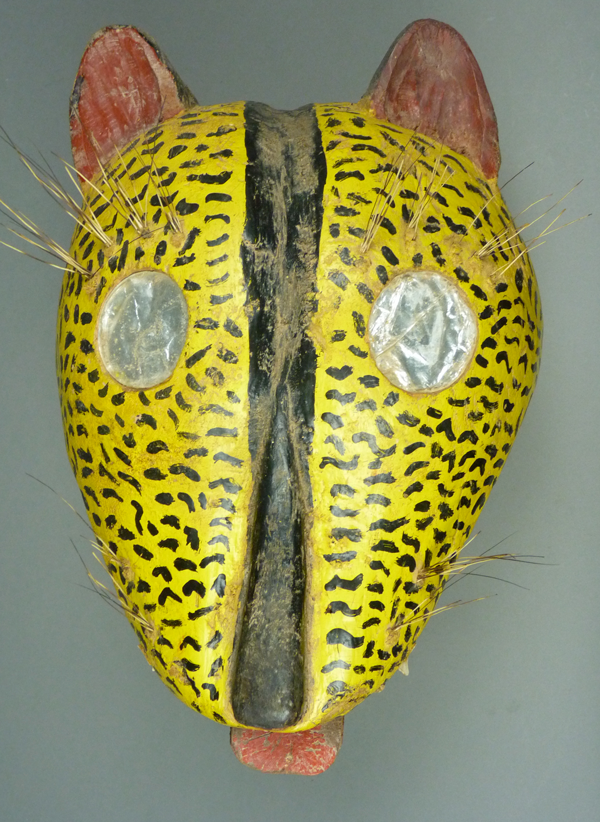
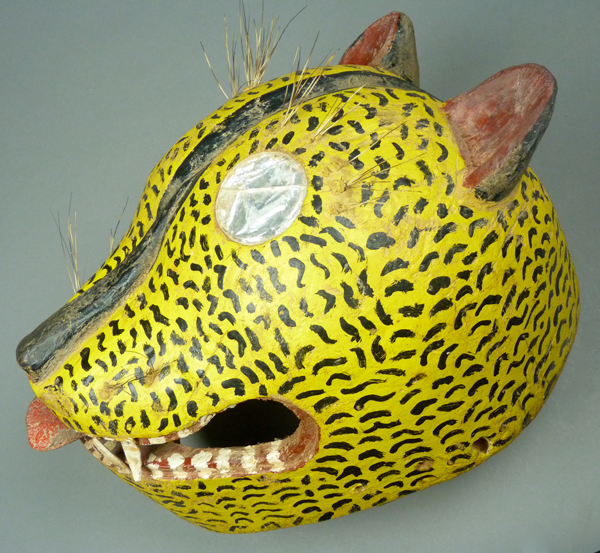
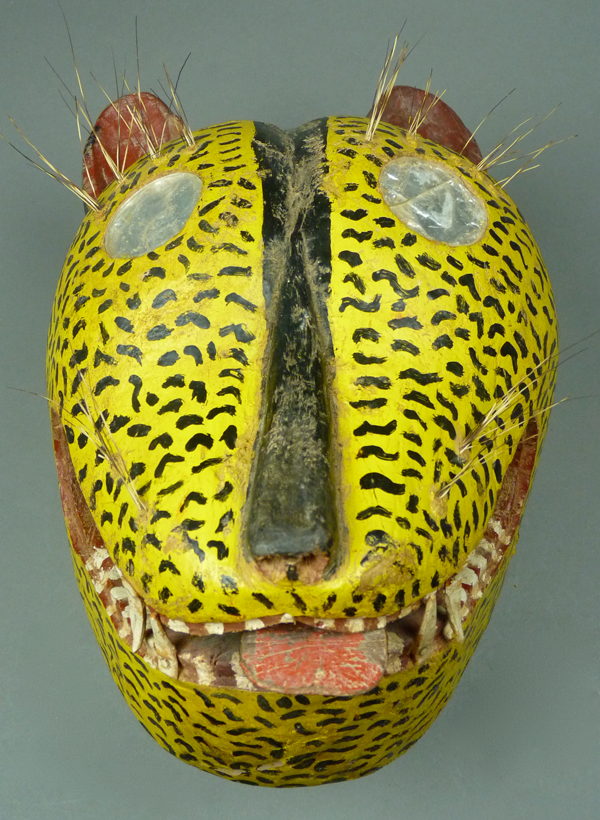


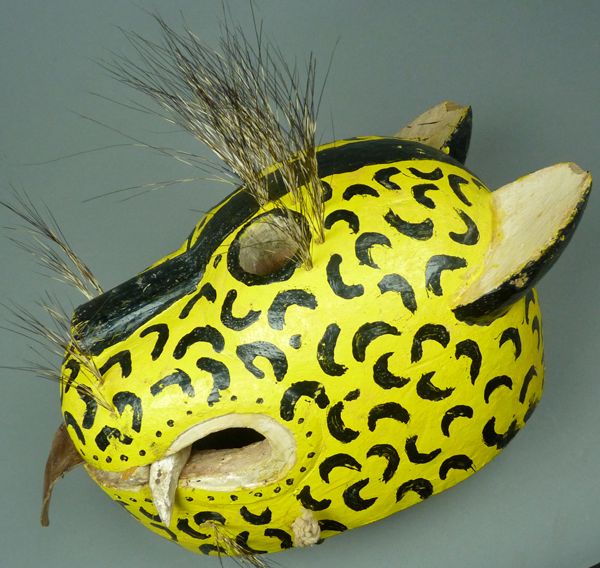

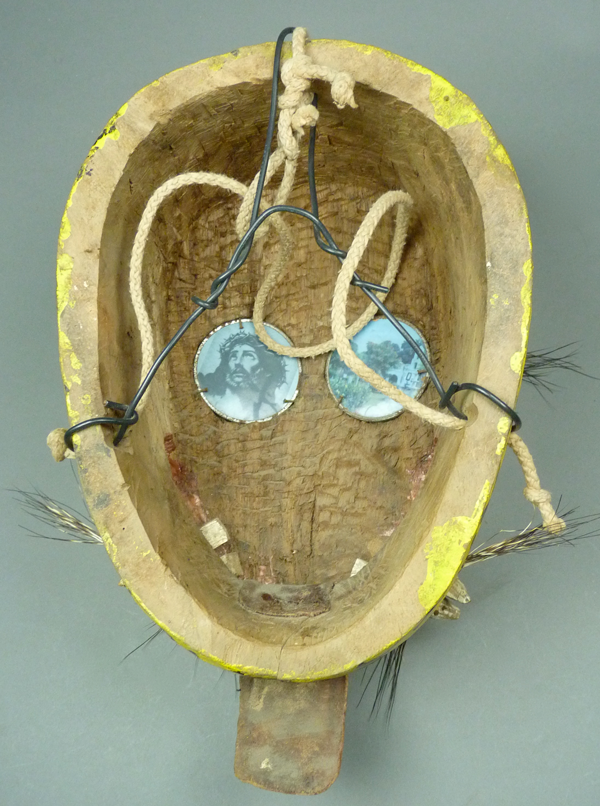
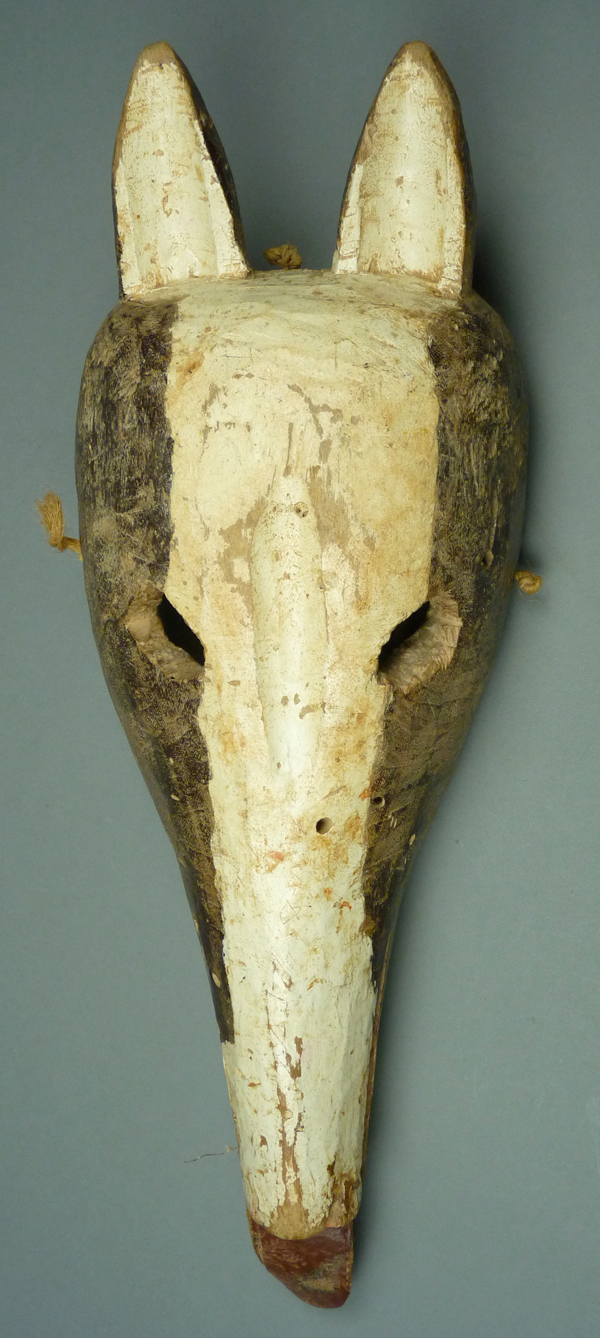
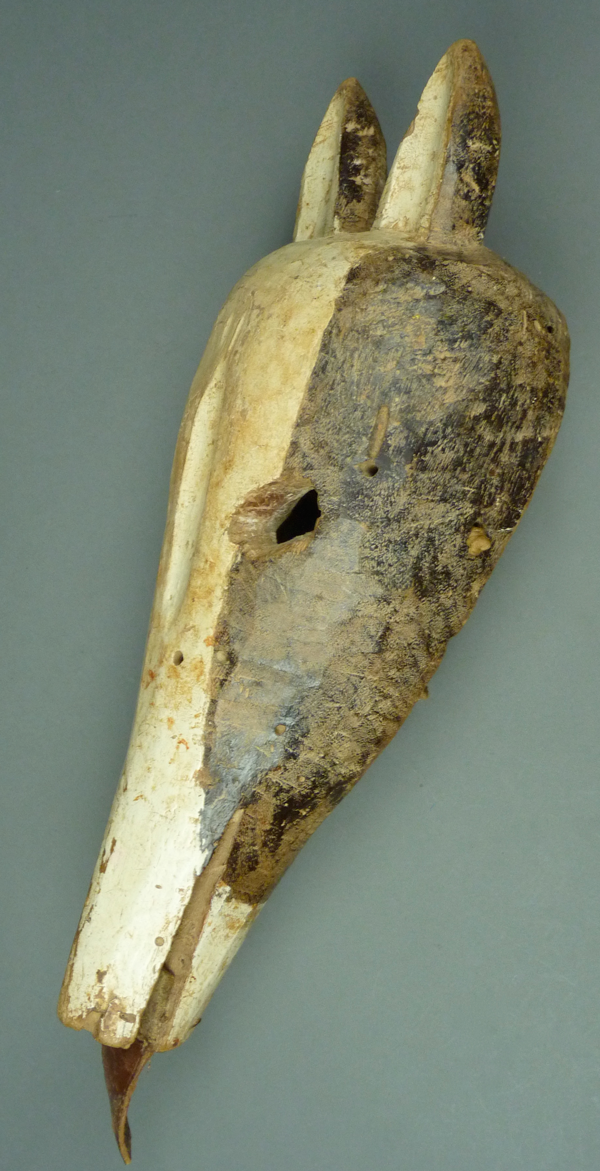
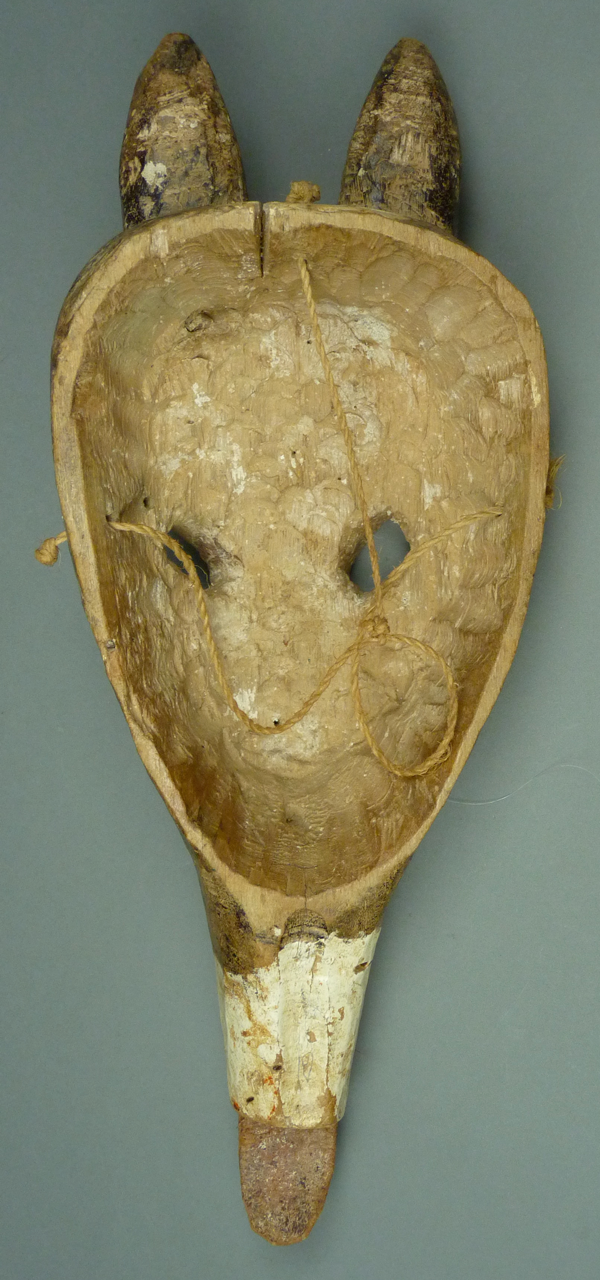

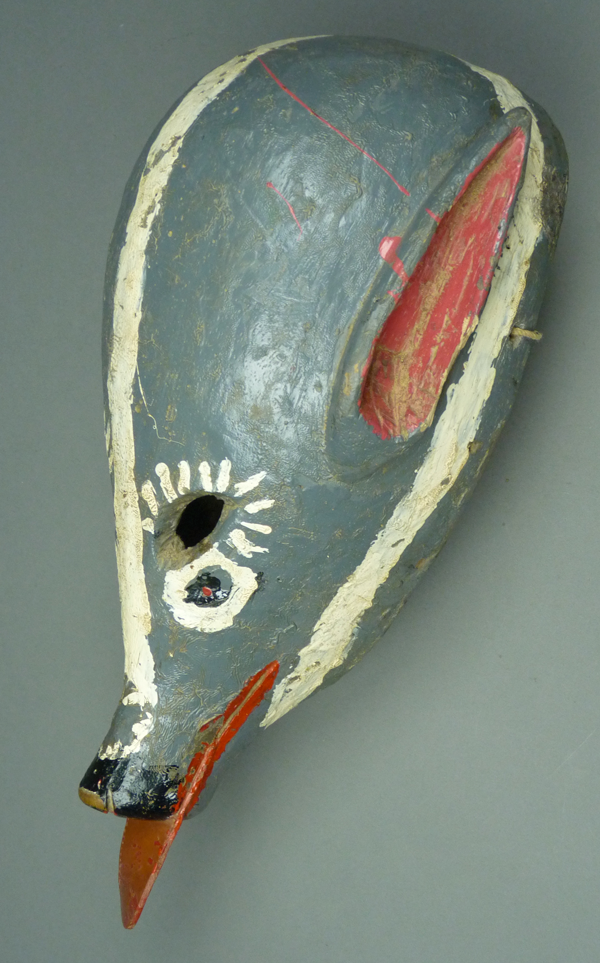





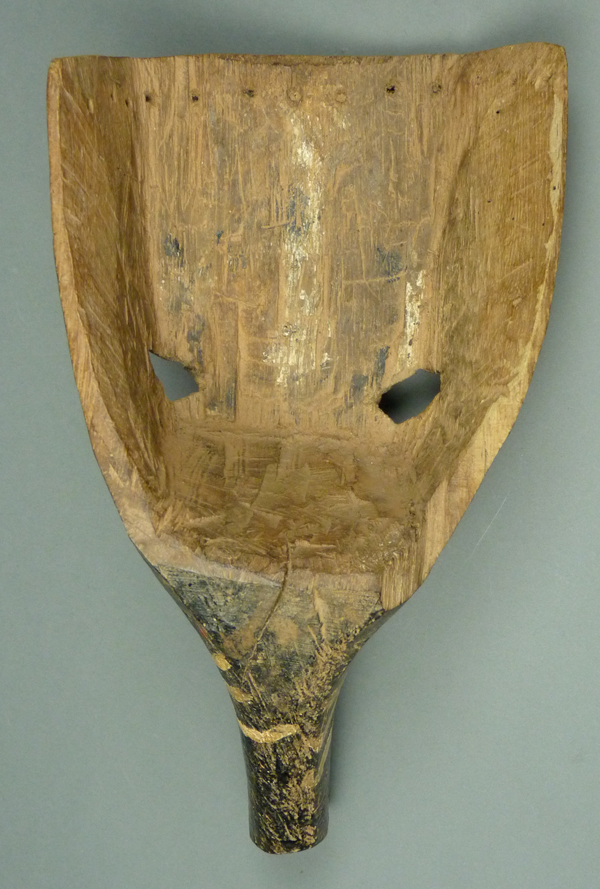
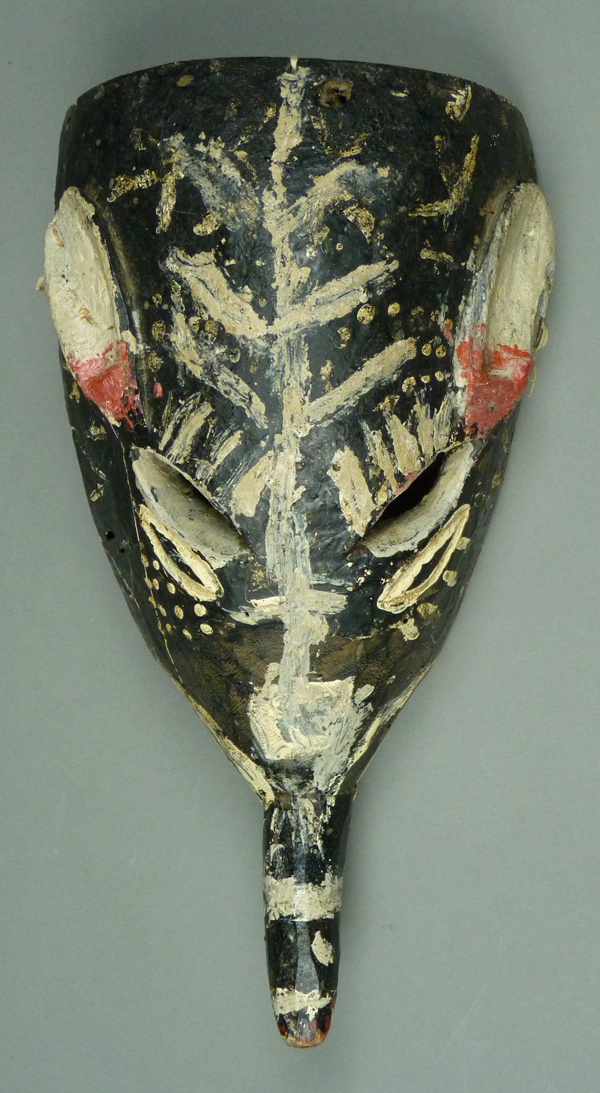
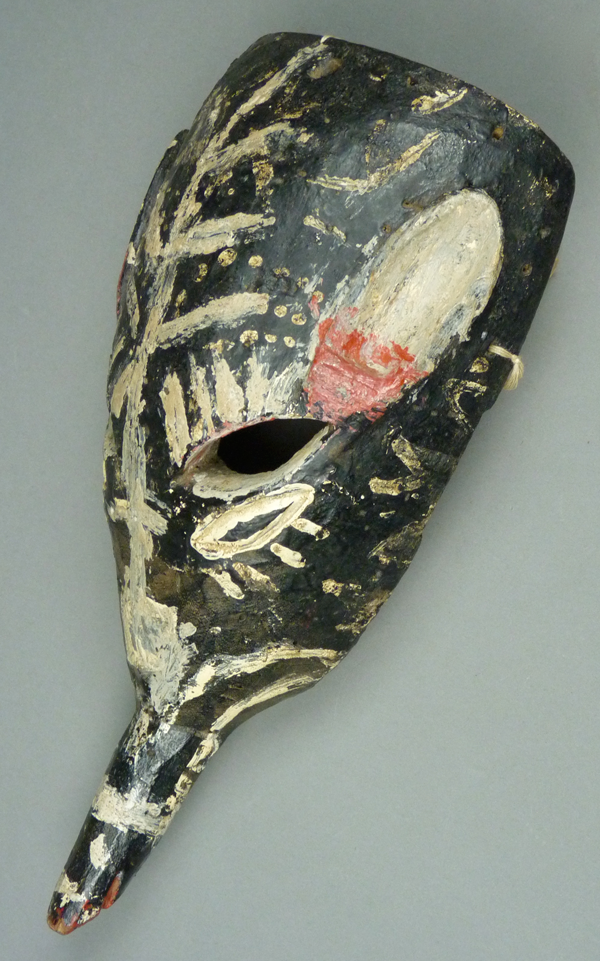

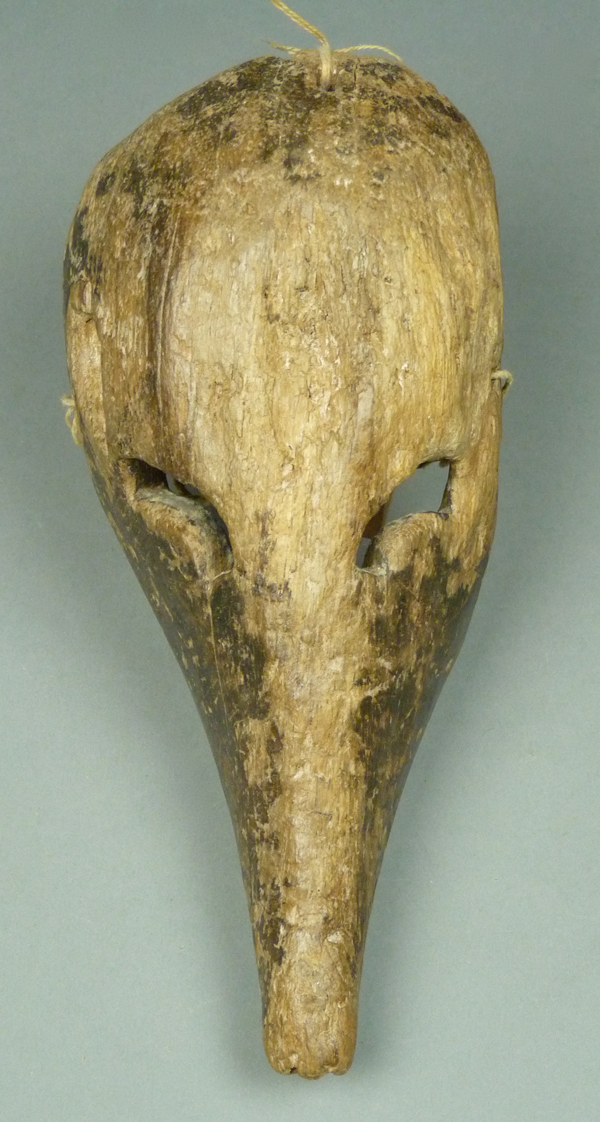
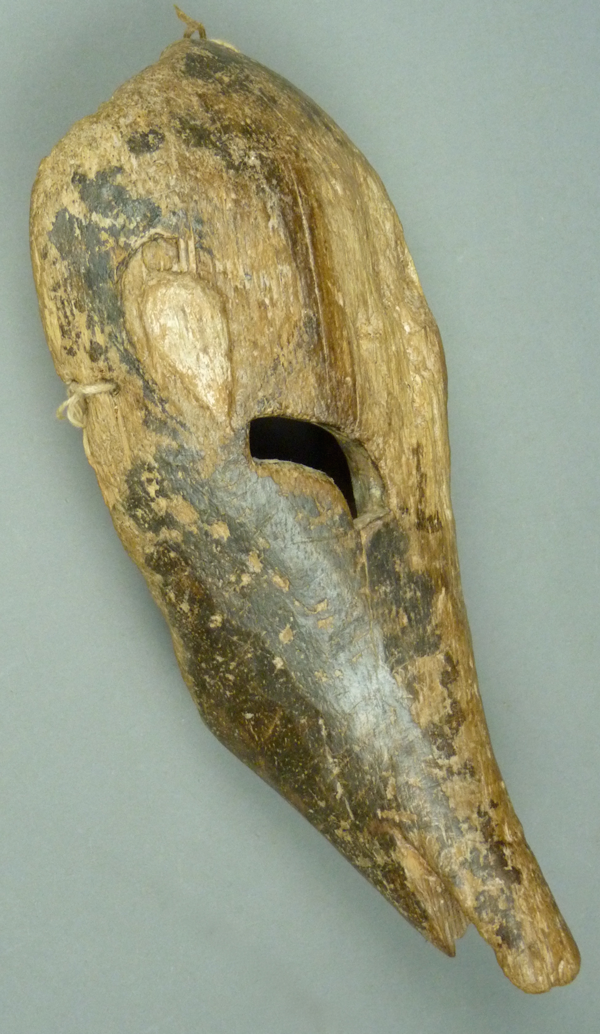
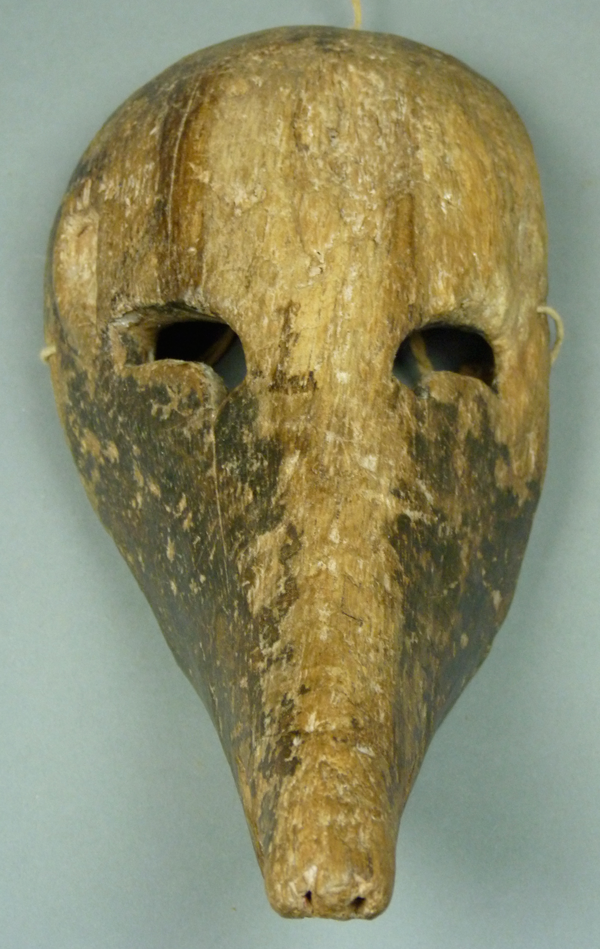
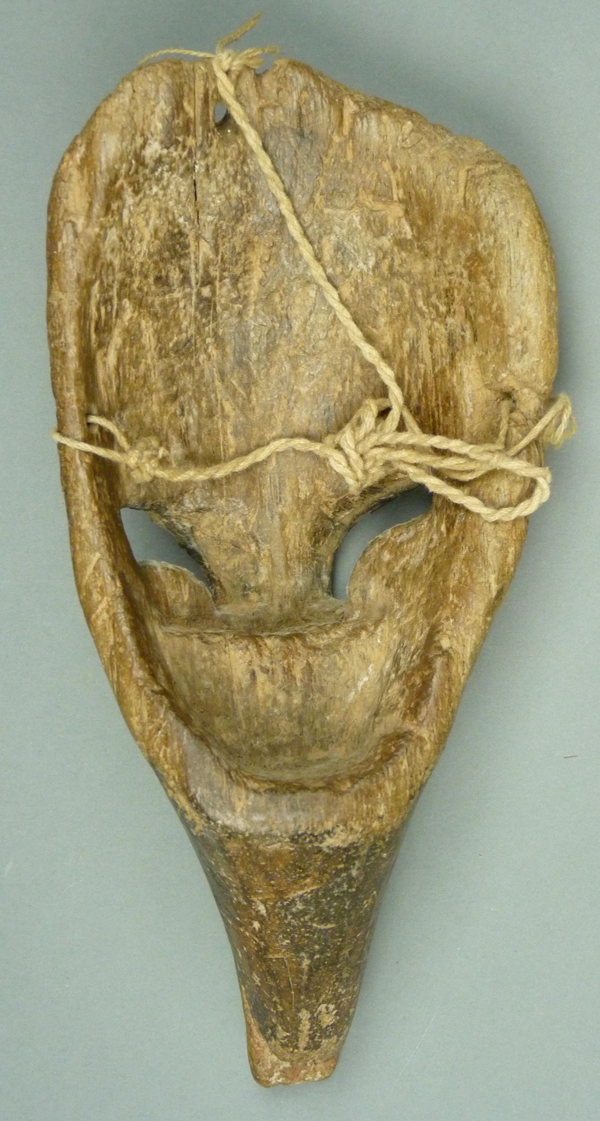
2 comments on “Tigre Masks from the Amuzgo towns in Guerrero”